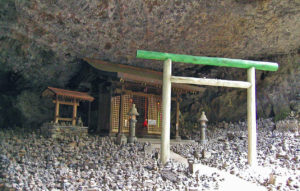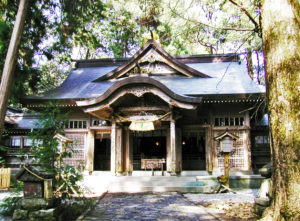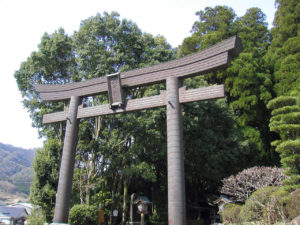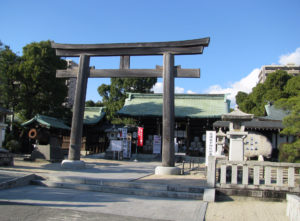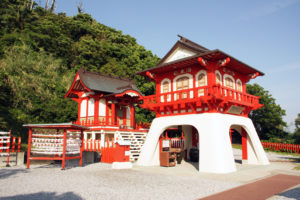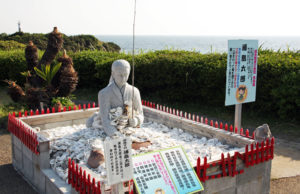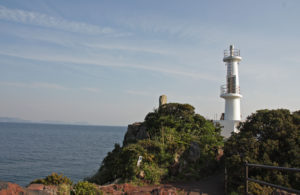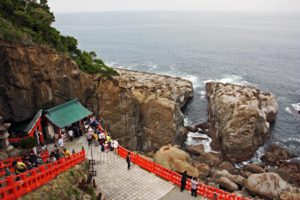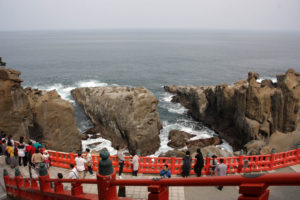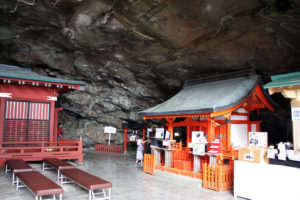Aoi Aso Shrine, in Hitoyoshi
Aoi Aso Shrine, located in Kami-Aoi-cho, Hitoyoshi-city, was designated as the first national treasure
in Kumamoto-prefecture by the Minister of Education, Culture, Sports, Science and Technology in 2008,
as “an extremely outstanding Important Cultural Property and one with particularly deep cultural and
historical significance.”
The shine is the oldest extant shrine in the Hitoyoshi-city. It dates from 806 and bears similarities in
layout to the imperial palace of that time in Heiankyo (now Kyoto), which was built in 794.
Most of the current shrine buildings date from 1610 and are a blend of several architectural styles with
some unusual decorative details.
An iconic symbol of the shrine
The approach to the worship hall passes through the two-story romon gate. The gate is 12 meters high,
with a steeply angled thatch roof. The transoms are decorated with dynamic carvings, including
episodes from a series of Confucian teachings (the Twenty-Four Exemplars of Filial Piety) and a pair
of carved white faces at each of the four corners. The carved faces are the only known carvings of their
kind in Japan and represent the emotions of pleasure, anger, sorrow, and joy.
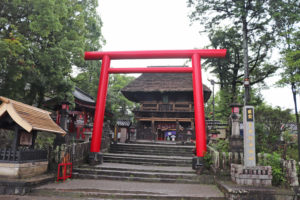 |
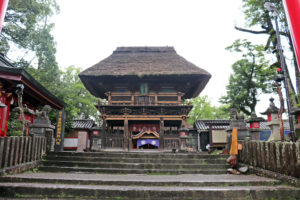 |
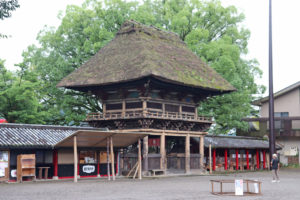 |
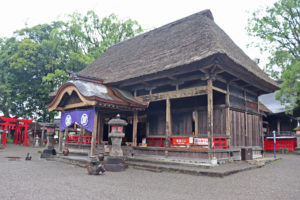 |
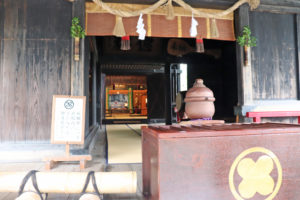 |
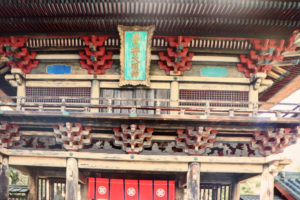 |
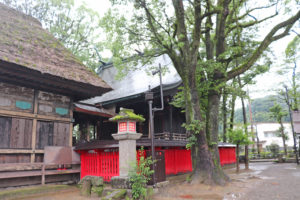 |
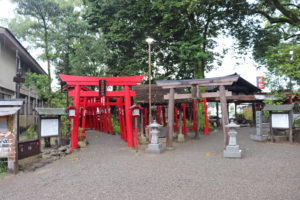 |
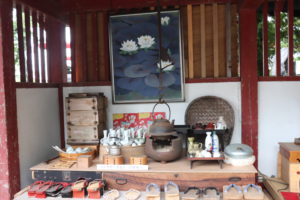 |
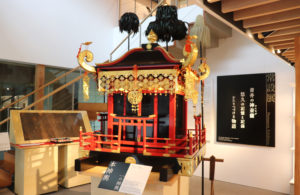 |
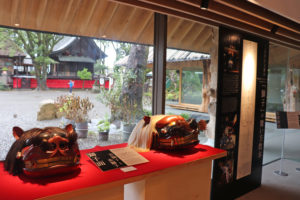 |
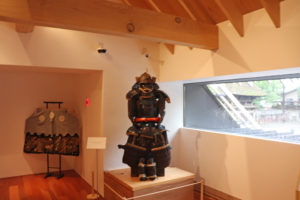 |
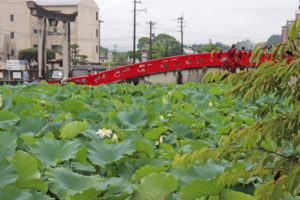 |
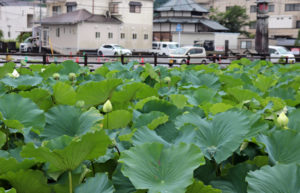 |
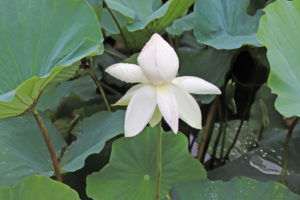 |
Munakata Shrine Nakatsu-gu
The Shrine is part of the World Heritage that the Sacred Island Okinoshiam and Associated site
in the Munakata Region has been registered on the World Heritage in 2016.
Nakatsu-gu, one of the three shrines that comprise Munakata Taisha, is situated on this island and
enshrines Tagitsuhime-no-Kami, one of the Three Goddesses of Munakata.
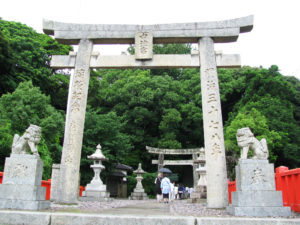 |
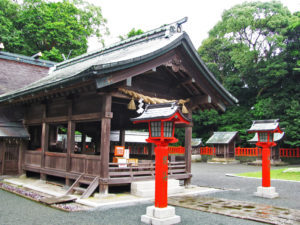 |
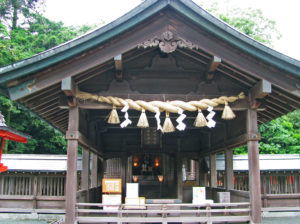 |
Shinto shrine
There are over eighty thousand Shinto shrines in Japan, and they represent the oldest
architectural style in the country. Shinto is a religion unique to Japan. Respect for land
and nature is its basic premise. Usually there is a mirror in the case inside each Shrine.
This is the symbol of Shrine’s deity. Shinto customs are common in Japanese life. Some
people household altars and pray for good health, success and happiness every day.
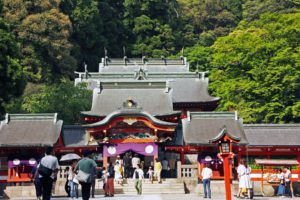 |
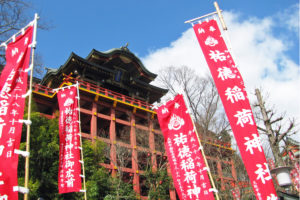 |
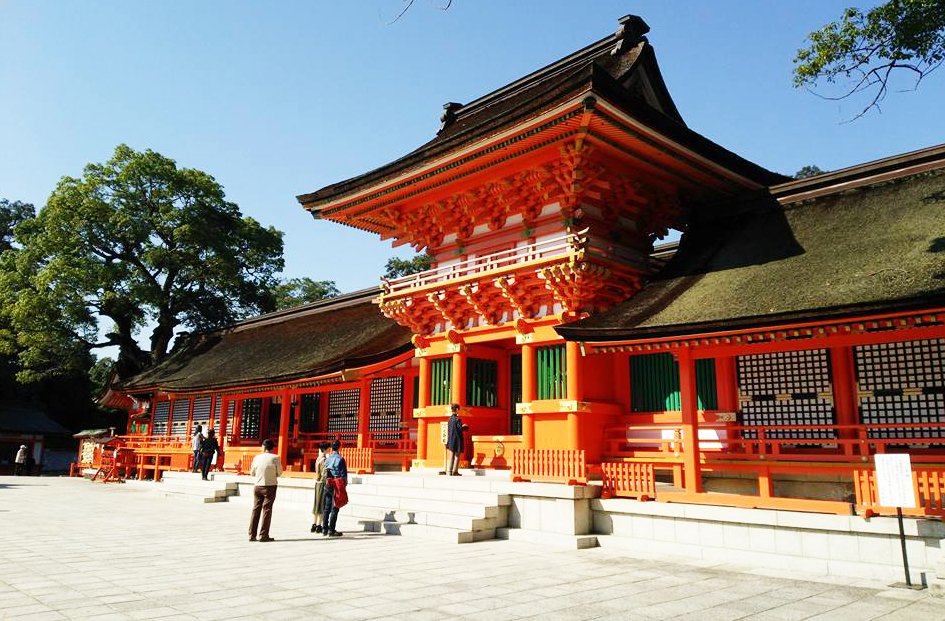 |
The entrance to the Shrine is marked by a huge gate called a Torii. There are usually
made of wood or stone, some painted bright red.
A pair of stone statues called Komainu guard the entrance to Shrine and its building.
They are mythical creature. One’s mouth is usually open while the other’s is closed.
Amano Iwato Shrine, in Takachiho
Takachiho is a birth place of Japanese indigenous religion, Shinto. There is a story of Shinto
origin in the Cave behind of Amano Iwato Shrine, and Amano Yasugawara. In the story,
Amaterasu, the Shinto sun goddess, became so outraged by her brother’s cruel pranks that
she hid herself in a cave, refusing to come out and depriving the world of her life-giving light.
All of the other gods and goddesses gathered to lure her out. They tried everything they
could think of to no avail until one goddess performed an outrageously ribald dance that
caused the other gods to roar with laughter. Amaterasu left the cave to see what all the fun
was about, and in doing so she returned her light to the world.
Amano Iwato Shrine
About ten kilometers outside of central Takachiho, Amano Iwato Shrine was built near
the Cave where Amaterasu is said to have hid herself away.
The cave cannot be approached, however, there is an observation deck behind the shrine’s
main building from where you can gaze across the river. In order to access the observation
deck, you need to inquire at the shrine entrance, and a priest will give you a quick guided tour.
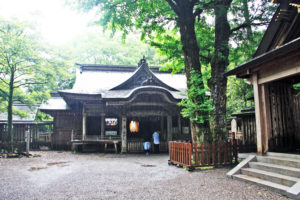 |
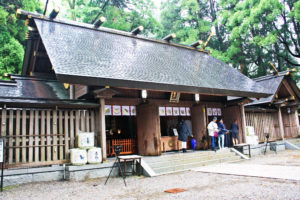 |
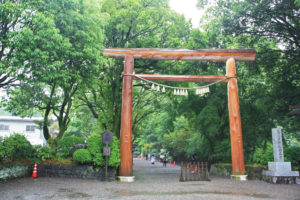 |
Amano Yasukawara
This is said to be the cave where the gods and goddesses met to discuss their strategy
of luring Amaterasu out of hiding. The natural beauty of the cave and river lined by
countless stacks of stones make Amano Yasukawara a place not to miss.
|
|
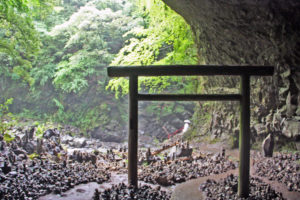 |
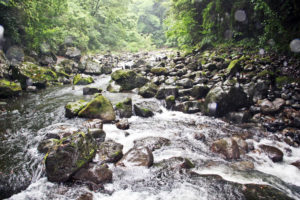 |
Takachiho Shrine, in Takachiho
The shrine has long history, established 1900 years ago, worship the deity of agriculture,
marriage, traffic safety and protection against misfortunes. Located just west of the town
center, is nestled in a grove of tall cedars. During the day the shrine’s nondescript, unpainted
buildings blend in naturally with the surrounding trees. The light that filters through, brings
with it an air of calm, peaceful reverence.
|
|
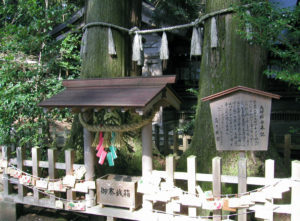 |
|
Today this legend is reenacted as Yokagura in a series of 33 episodes depicting the divine
quarrel as well as other deeds of the gods. On winter weekends, people gather to watch
all-night performances of these episodes at different locations each week, sometimes at
private homes. The performances are held on Saturday evenings from mid November to
mid February.
Kirishima Shrine, in kirishima
One of the most beautiful shrine in Kyushu, and is surrounded by forest.
The Shrine buildings were constructed in 1715 and designated as Important Cultural
Property of Japan.
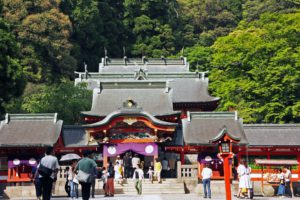 |
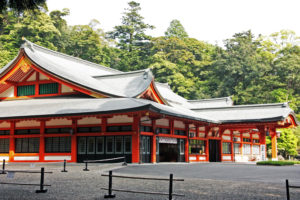 |
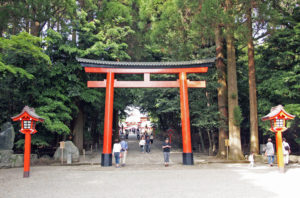 |
Sueyama Shrine, in Arita
The Sueyama Shrine is located in Arita Town, Nishimatsuura District. Feature of the Shrine
is Shrine gate made by porcelain, and usually the Shrine gate are made of stone or wood.
It is dedicated to Emperor Ōjin, Nabeshima Naoshige, and Yi Sam-pyeong. It was founded
in 1658. The Shire gate or Torii was built in 1888. It had been designated Tangible Cultural
Properties on April 28, 2000.
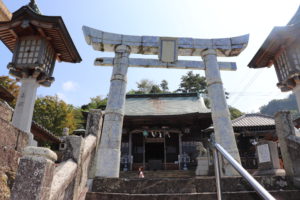 |
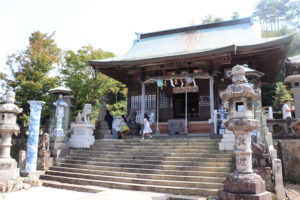 |
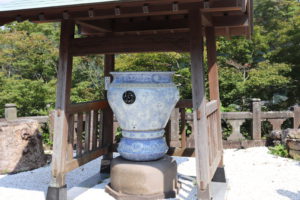 |
The Yi Sam-pyeong Monument was built in 1917 to commemorate the 300th anniversary of
Arita’s porcelain. It is on a hill, from which one can view Arita town.
Saga Shrine, in Saga
The shrine is designated as the special government shrine. The shrine dedicated to Naomasa
Nabeshima, who oversaw the manufacture of Japan’s first modern Cannon. A New Year event
in which a canon is shot for celebration by the governor, mayor and other participants is held
at the shrine at the midnight of December 31st.
|
|
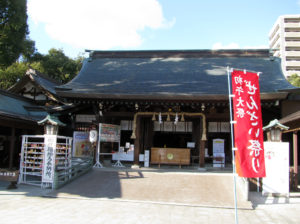 |
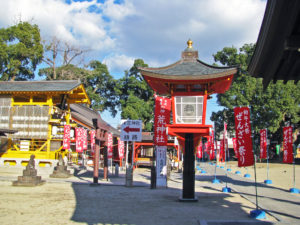 |
Ryugu Shrine, in Ibusuki
Ryugu Shrine is located at Nagasaki-bana Cape, the southernmost point of Satsuma
peninsula. Nagasaki-bana Cape is said to be the birthplace of the legend of Urashima
Taro who saved a turtle, it took him to Ryugu-jo (the Palace of the Dragon as a token
of it’s gratitude). Sea turtles come to lay eggs on the beach near this place, and local
people love them as the protective god of the sea.
|
|
|
|
The new worship hall of the shrine was built in 2011. The name of popular limited
express for sightseeing “Ibusuki-tamate-bako” is associated with the legend of Urashima
Taro. Tamate-bako is a box Otohime gave to Urashima Taro. This shrine is becoming
popular as a power spot of matchmaking and good fortune in love. There are shells in
a big pot. It is said that if you write your wish on a shell and dedicate it, your wish will
be granted.
Udo Shrine, in Miyazaki
Beautiful and exciting Shine. Udo Shrine is a Shinto shrine in the cave of the cliff side
facing the Pacific Ocean. It is located about 35 km south of Miyazaki city. In legend,
a goddess of sea built a hut to give birth to a great god here. Then it is said that Empress
Suiko (554-628) built the shrine there.
|
|
|
|
The priest of Tendai Buddhism built a Buddhist temple in 782, on the order of Emperor Kanmu.
In the middle ages, this area had been the training place for mountain priests because of the
steep rocky cliffs.

